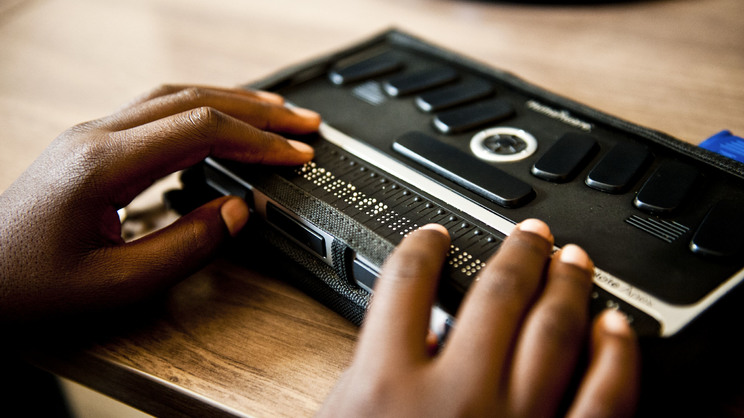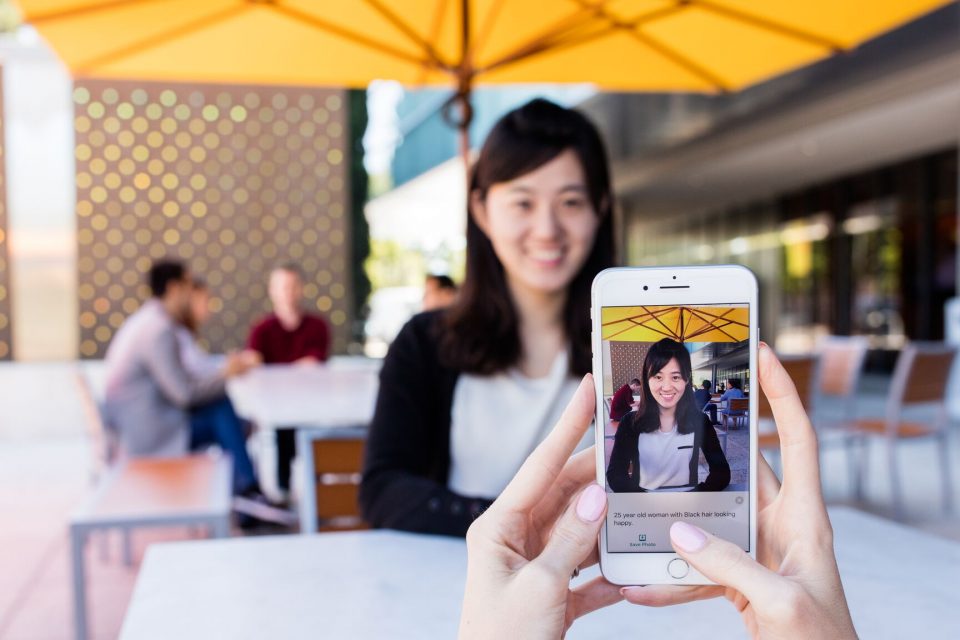Discover Cutting-edge Devices Created for the Visually Impaired
The development of ingenious tools for the visually damaged represents a substantial development in ease of access and self-reliance. Technologies such as clever glasses with AI capacities and mobile applications made to give auditory summaries are reshaping everyday experiences for individuals. In addition, wearable devices that use haptic comments improve environmental awareness, while contemporary Braille technologies use new means to engage with message. As these tools remain to advance, their effect on the lives of those with aesthetic disabilities increases crucial inquiries regarding the future of inclusivity and autonomy in various aspects of life. What lies in advance in this technical landscape?
Smart Glasses for Navigating

Smart glasses created for navigating are revolutionizing the method aesthetically impaired people interact with their atmosphere. These sophisticated tools utilize a combination of camera technology, expert system, and acoustic feedback to offer real-time details regarding environments. By employing obstacle detection systems, wise glasses can notify customers to prospective threats, allowing safer wheelchair in both strange and familiar settings.
The assimilation of GPS technology further boosts navigation capacities, permitting customers to obtain acoustic instructions as they relocate. This hands-free technique not just promotes self-reliance however additionally empowers visually damaged people to navigate metropolitan landscapes with enhanced confidence. In addition, numerous wise glasses are equipped with attributes that recognize spots and road indications, supplying contextual details that boosts the customer experience.
In addition, the growth of these gadgets is continually progressing, with firms functioning to improve the precision of things acknowledgment and increase the range of navigational features. As clever glasses come to be more economical and obtainable, they hold the potential to dramatically change everyday life for aesthetically impaired individuals. Ultimately, these ingenious devices stand for a vital action towards inclusivity, offering enhanced mobility and a greater sense of freedom for people browsing the globe around them.

Mobile Application for Daily Living
How can mobile applications improve the everyday lives of aesthetically damaged people? Mobile applications are reinventing the method aesthetically impaired individuals browse their settings, manage everyday jobs, and gain access to information. These applications provide necessary support with numerous capabilities, cultivating self-reliance and improving lifestyle.
A number of cutting-edge mobile apps are made specifically for day-to-day living. Applications like Be My Eyes connect aesthetically impaired users with sighted volunteers via video calls, permitting them to get real-time support with jobs such as checking out labels or navigating unfamiliar rooms. Likewise, Seeing AI, developed by Microsoft, utilizes expert system to explain surroundings, read text, and recognize items, efficiently transforming a smartphone right into an effective device for everyday support.
Furthermore, navigation applications tailored for the visually damaged, such as Aira and BlindSquare, supply audio-based directions and environmental information, allowing users to traverse their surroundings securely and with confidence. Past navigating and instant help, mobile applications likewise sustain organization and job monitoring, with attributes that aid users establish pointers, create order of business, and track consultations. In summary, mobile applications function as indispensable sources, equipping visually impaired people to lead more independent and meeting lives.
Wearable Technologies for Aid
Empowerment through innovation is progressively evident in the realm of wearable devices created to help visually damaged people. These ingenious tools incorporate perfectly into every day life, enhancing navigation and supplying important feedback to individuals. For example, clever glasses geared up with video cameras can recognize faces and check out text aloud, allowing individuals to interact even more with confidence in professional and social settings.
One more significant development is the usage of haptic comments systems in wearable gadgets. These systems use resonances or various other tactile signals to share details about the customer's environment, such as obstacles or changes in terrain, boosting movement and safety. Wearable modern technologies additionally include wristbands that attach to smartphones, informing users to notifications with subtle vibrations, therefore improving connectivity without reliance on page visual hints.
As these innovations proceed to develop, they are not just boosting self-reliance for aesthetically damaged people but also fostering a greater feeling of inclusion in society. By bridging the gap between obstacles dealt with in day-to-day living and the possibility for autonomy, wearable innovations act as pivotal devices in the mission for equality and empowerment for those with aesthetic disabilities.
Audio Summary Tools
Sound summary tools play an essential duty in enhancing availability for visually damaged individuals, providing them with the capacity to engage with aesthetic media. OCR devices for the blind. These tools supply narrated descriptions of key aesthetic elements in movies, tv shows, and live efficiencies, making sure that users can totally understand the context and feelings conveyed via visuals
Sound summary can be incorporated into different platforms, consisting of streaming solutions, cinema screenings, and live cinema. Numerous preferred streaming services now consist of audio description as an access feature, enabling visitors to choose it easily. In addition to conventional media, specialized apps likewise exist, supplying audio summaries for art events, galleries, and various other social events.
The efficiency of audio summary pivots on the skill of the narrators, that have to convey aesthetic information succinctly without diminishing the original audio. Advancements in this area are likewise leading description the way for more individualized experiences, where customers can adjust the level of detail and pacing according to their choices.
Braille Innovations and Tools
Braille technologies and gadgets have significantly changed the way aesthetically impaired people communicate with message and info. Modern advancements have actually resulted in the growth of flexible devices that improve proficiency and independence amongst important link individuals. Notably, Braille show technologies have progressed, allowing for vibrant reading experiences. These gadgets transform digital text into Braille, making it possible for users to access a substantial array of info on computer systems, mobile phones, and tablet computers.
Additionally, portable Braille notetakers incorporate traditional Braille input with modern functionalities, helping with note-taking, scheduling, and file editing on the move. Wearable technology for low vision. These small devices frequently feature text-to-speech capabilities, linking the space between Braille and auditory information
Additionally, cutting-edge Braille printers have arised, permitting users to generate Braille labels, records, and academic materials effectively. This availability fosters better participation in academic and expert settings, inevitably promoting inclusivity.
Furthermore, study into smart Braille modern technologies remains to expand. Instruments that integrate man-made intelligence are being explored to give real-time navigating support and contextual details, improving the user experience in varied settings. Generally, these developments mirror a commitment to encouraging visually damaged individuals with technology, guaranteeing they can easily gain access to and engage with the world around them.

Final Thought
The improvement of innovative tools for the aesthetically damaged significantly boosts freedom and top quality of life. Smart glasses, mobile applications, wearable modern technologies, audio description devices, and Braille advancements collectively empower people by offering essential navigating assistance, environmental awareness, and boosted analysis experiences. These modern technologies not just foster greater inclusion but also promote autonomy in daily activities, inevitably adding to a much more equitable and easily accessible society for aesthetically impaired people. Proceeded advancement in this field holds assurance for additional enhancements.
As clever glasses end up being a lot more accessible and inexpensive, they hold the prospective to significantly transform everyday life for aesthetically damaged users. Mobile apps are reinventing the means aesthetically impaired users navigate their atmospheres, take care of day-to-day tasks, and access info. Applications like Be My Eyes connect visually impaired individuals with sighted volunteers using video clip telephone calls, permitting them to receive real-time assistance with tasks such as checking out labels or browsing unknown rooms.In addition, navigating applications customized for the aesthetically damaged, such as Aira and BlindSquare, use audio-based instructions and ecological details, allowing individuals to traverse their environments securely and with confidence.The development of ingenious tools for the aesthetically damaged considerably improves self-reliance and high quality of life.